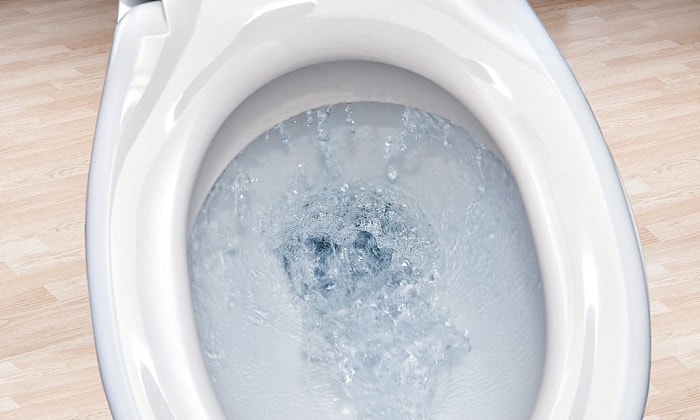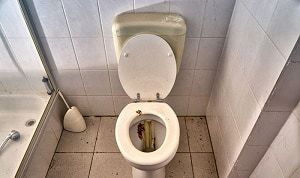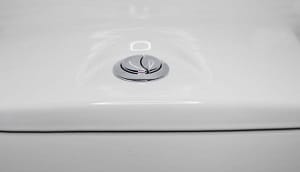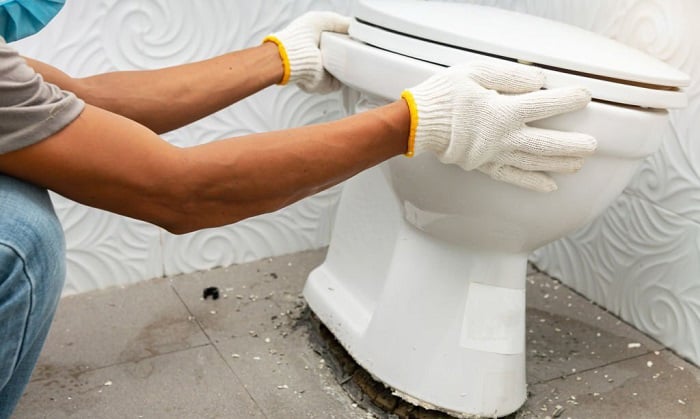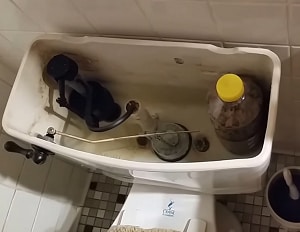The EPA or Environmental Protection Agency of the United States points out that the toilet accounts for 30% of water consumption in the household. How much water does your toilet use? Out of curiosity, you’ll have this question in your mind. The answer lies in the kind of toilet that you have at home.
Compared to new toilets that work with 1.5 gallons of water per flush, older toilets use too much water — they need 7 gallons of water for every flush. Awareness regarding this issue is crucial as it affects the environment. To learn more, keep on reading.
Table of Contents
Different Toilets… Different Water Consumption
How much water does it take to flush a toilet? As mentioned in the introduction, the amount of water that is necessary for every flush is based on the type of toilet you have.
1. Old toilets
Old toilets are those that were made before and in the 80s. They’re designed for 5 to 7 gallons of water per flush. You are probably surprised by this amount of water. But how much water does a toilet use per flush in litres?
Imagine that an old toilet can consume 19 to 26.5 litres of water, and it’s just insane! People inside the household don’t only flush the toilet once a day but more.
Thus, it takes a big part of your water bill. Houses built before the 90s have this toilet. There’s no doubt that it can get rid of all the waste but excessive water consumption is practiced.
2. Low-flush toilet
Since everyone thinks about its ability to save water, how much water does a low-flow toilet use? In 1992, federal law regarding toilet water usage was enacted. It instructs manufacturers that toilets made after 1994 must not consume over 1.6 gallons for every flush. This is done to promote water conservation throughout the country.
This law incorporates the states’ regulations. And, this was how low-flush toilets were born.
3. High-efficiency toilet
Is this high-efficiency toilet any better than the average toilet flush gallons of water? As mentioned, 1.6 gallons per flush standard toilet was made after 1994. The answer is yes as it only needs 1.28 gallons of water for every flush.
To present its wonders, only 9,000 gallons of water are used per year in a household with four people.
There are thousands of high-efficiency toilets in the market. You have to check the product description before purchasing for efficiency and performance.
I recommend American Standard Champion 4, Toto Ultramax, and Kohler Highline Classic as they’re powerful enough to send waste down to the sewer despite the small amount of water they consume.
4. Dual flush toilet
This toilet is the contemporary counterpart of high-efficiency toilets. You have two options to choose from which are the full flush and half flush.
Moreover, you can save water by not always having the full flush. The half flush is enough in some cases so a dual flush toilet is considered efficient overall. This system is environmentally friendly as it promotes the conservation of water.
Toilet Leaks
Apart from toilet water consumption, leaks can increase water usage with your toilet. You have to be aware of it as you can’t easily find this issue. As the toilet gets older each day, the rubber parts also deteriorate and it’s the primary cause of leaks. To be specific, here are the other reasons.
- Damaged seals
- Gaps on the flush valve
- Small cuts on the flush valve
- The opening of the fill valve
It’s good news that these parts are easy to replace without spending a lot of money. However, property managers have a hard time because of this.
Although the said parts are not expensive, diagnosis is sometimes incorrect so replacement may not be necessary after all. They’re usually exposed to harsh cleaners so corrosion can’t be avoided.
The pressure build-up is not good for the toilet. It happens at night when only a few tenants in an apartment building use the toilet. The floating balls inside the water tank remain open.
But they can’t consistently hold on so they relieve the water’s weight which is equal to gallons. Thus, gallons of water are wasted at night without your knowledge if you live in an apartment building.
Read more: How to know if your toilet is leaking underneath?
1. The exact amount lost because of leaks
The running water due to leakage is different from toilet gallons per flush. It depends on their speed. A slow leak can put 30 gallons of water a day into waste. This case won’t likely get your attention. A medium leak is more noticeable as around 250 gallons of water are wasted daily and it adds $3.50 per day to your water bill.
The most obvious is the large leak, which is a constant water flow and it releases 40,000 gallons of water a day. All of the leakage issues need immediate attention, especially this one. It’s ridiculous to pay $53 a day for nothing! Although water charges differ from place to place, wasting is not reasonable.
2. Prevention of leaks and ways to save water
There are leak detectors like LeakAlertor and toilet leak protection systems from E-SDS so you can avoid wasting water. Apart from these helpful items, you can do these things to save water:
- Flushing trash like used toilet paper in your toilet is not a wise move. Sending them to the sewer requires more water.
- Adjust the running water inside the tank; especially if it takes a long time to stop.
- How much water is in a toilet bowl? This question leads to the importance of a water line indicator inside a water tank. During water refill, you can let it stay in the line or below it.
- Choosing a flush mode with a low volume of water is good for a dual flush toilet.
Calculator for Toilet Water Usage
It’s great that local water utilities include a calculator for toilet water usage. Knowing the toilet flush volume or GPF (gallon per flush) is not enough to conserve water.
You have to know the amount of water that you use daily, monthly, or yearly. You can check the GPF on the product description or at the base of the tank. The calculator can also show you the water that you can save if you have a high-efficiency toilet.
Takeaway
How much water does your toilet use? To know the answer to this, you have to know the GPF of your toilet and you have to think about the traffic in your toilet. The number of users can also help you get the sum.
Evaluation if there are leaks is also necessary. If there is, you’ll have to add the amount of wasted water to the consumption of your toilet daily. Checking monthly or yearly usage is good as well.

I’m Paulk Webb, and I work as a writer for Saveourwaterrebates. I’m happy to put in the time and effort to conduct market research to identify the most pressing issues faced by households concerning their plumbing. Feel free to check out our guides to get the most informed recommendations for how to solve your problems.


